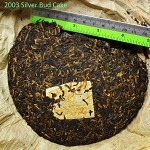This is the third article of the Methods of Tea Brewing series. The Shao An style of brewing is most commonly seen in Shao An, Nanrui, Xi Nan areas of Fujian. It is usually employed in the brewing of heavy roasted or aged oolongs, and more commonly seen to be used with pots that are single… [Read More…]
Anxi Brewing Method for Tea
This is the second article of the Methods of Tea Brewing series. The Anxi Brewing Method is a method that was developed with the increased popularity of Tie Kuan Yin rolled oolong tea. Its usage is seen in Fujian, Anxi, and up to northern Wuyi areas as well, and is most commonly used in these… [Read More…]
Yixing / Taiwanese Brewing method for Tea
This is the first article of the Methods of Tea Brewing series. If you recall from my previous article the following image : Tea brewing methods, procedures, steps, their refinement and mastery is the other major half of “Cha-Do”. In the following few articles, I’ll cover several historical tea brewing methods, methods that had been… [Read More…]
Philosophy of Chado – Tasting
I had been wanting to write this for the longest time, and since I managed to get a breather from work these few days, I thought I would attempt something challenging. This is particularly a dangerous topic to write about as it may lead to misconceptions of other people on me and my website. People have often… [Read More…]
Oolong Pu Erh Tea
As you start adding hot water to your tea leaves in a pot, could I surprise you by telling you that leaves are actually quite water proof?! It is normal for leaves to be water proof, almost all leaves are in some way or another, this is due to a waxy layer called the… [Read More…]
Secrets of Tea Seasons and Ageing
春茶苦,夏茶涩,要好喝,秋白露. There is a frequent saying amongst generations of Chinese tea drinkers that : Spring tea is Bitter, Summer Tea is astringent, Autumn tea is the most delectable. 春茶苦,夏茶涩,要好喝,秋白露. This has been mis-translated by many, and together with the omission of the fact that this saying only applies to Tie Kuan Yin and not all… [Read More…]
Secrets on choosing Yixing Teapots
Be warned! Long article ahead.. 3000+ words perhaps.. This has been one of the most difficult articles to write (although the funny thing was that I managed to write it in a couple of hours since I had a clear mind after some good tea). I had once been thinking of writing a book by… [Read More…]
Pu Erh Tea Storage issues
In the late 80s and early 90s, the Taiwanese, with their huge capitals, decided to sweep all the old pu-erh tea cakes off the market before the craze started. Subsequently by releasing books, writing websites, magazines, demand was created, with the taiwanese beaming because they now have a huge supply. But what was pu-erh… [Read More…]
Why does tea taste different when brewed in Yixing wares
Why is Redox (reduction/oxidation) of compounds important in tea? The ancient people had realized that oxidation often resulted in unique and special aromas/fragrances being developed in the tea, that was why oolong teas were born. In the process of making oolong teas, the tea leaves are bruised to allow for controlled oxidation to occur. Similarly, when one drinks some Wuyi Mountain Rock Tea (yan cha), there is… [Read More…]
An Awesome Tea site
It wasn’t easy convincing Mr Teaism to write about tea and tea culture online. At least I think I tried, and many other people too had been encouraging him to, and so he finally agreed! Mr Teaism is a Crouching Tiger, Hidden Dragon in Tea, especially that of Pu-Er Tea and Yixing Purple Clay Teapots. No… [Read More…]









